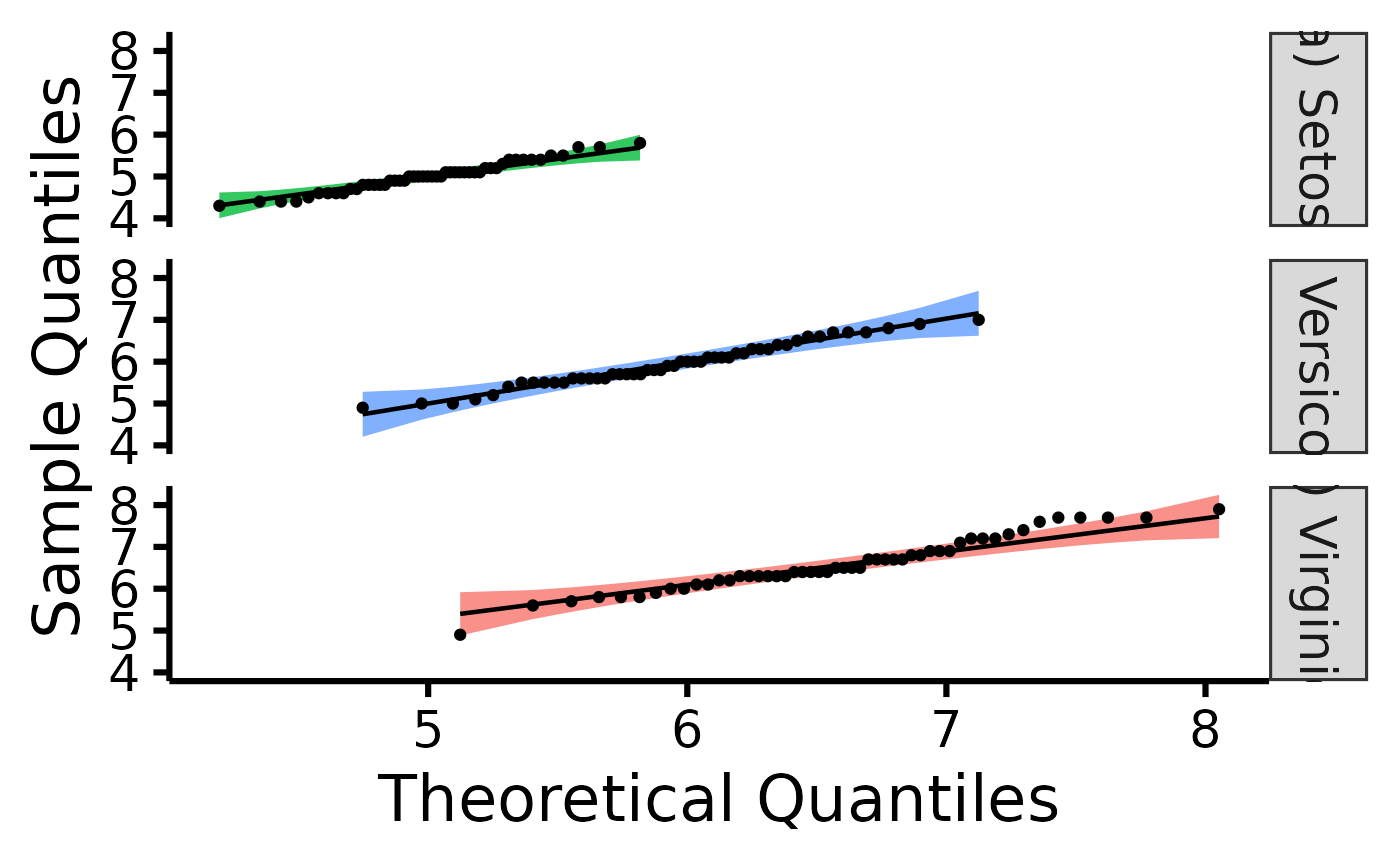Easily make nice per-group QQ plots through
a wrapper around the ggplot2 and qqplotr packages.
Usage
nice_qq(
data,
variable,
group = NULL,
colours,
groups.labels = NULL,
grid = TRUE,
shapiro = FALSE,
title = variable
)Arguments
- data
The data frame.
- variable
The dependent variable to be plotted.
- group
The group by which to plot the variable.
- colours
Desired colours for the plot, if desired.
- groups.labels
How to label the groups.
- grid
Logical, whether to keep the default background grid or not. APA style suggests not using a grid in the background, though in this case some may find it useful to more easily estimate the slopes of the different groups.
- shapiro
Logical, whether to include the p-value from the Shapiro-Wilk test on the plot.
- title
An optional title, if desired.
Value
A qq plot of class ggplot, by group (if provided), along a reference interpretation helper, the 95% confidence band.
See also
Other functions useful in assumption testing:
nice_assumptions, nice_density,
nice_normality, nice_var,
nice_varplot. Tutorial:
https://rempsyc.remi-theriault.com/articles/assumptions
Examples
# Make the basic plot
nice_qq(
data = iris,
variable = "Sepal.Length",
group = "Species"
)
 # Further customization
nice_qq(
data = iris,
variable = "Sepal.Length",
group = "Species",
colours = c("#00BA38", "#619CFF", "#F8766D"),
groups.labels = c("(a) Setosa", "(b) Versicolor", "(c) Virginica"),
grid = FALSE,
shapiro = TRUE,
title = NULL
)
# Further customization
nice_qq(
data = iris,
variable = "Sepal.Length",
group = "Species",
colours = c("#00BA38", "#619CFF", "#F8766D"),
groups.labels = c("(a) Setosa", "(b) Versicolor", "(c) Virginica"),
grid = FALSE,
shapiro = TRUE,
title = NULL
)

